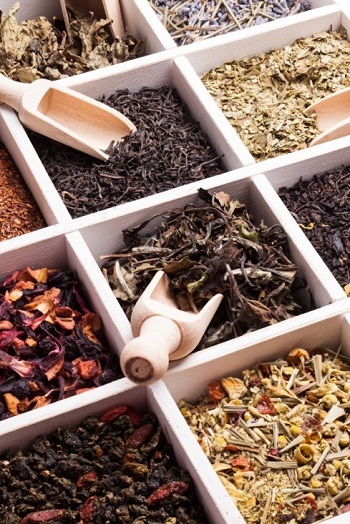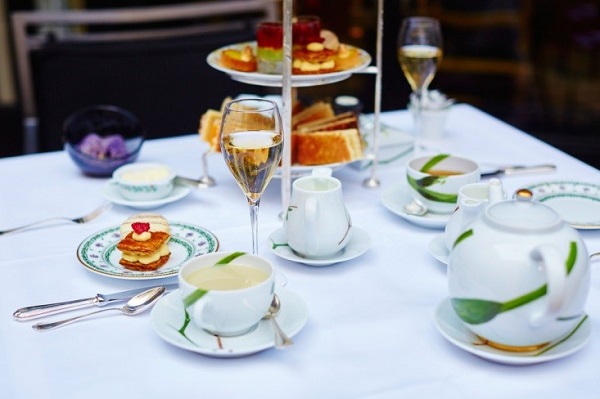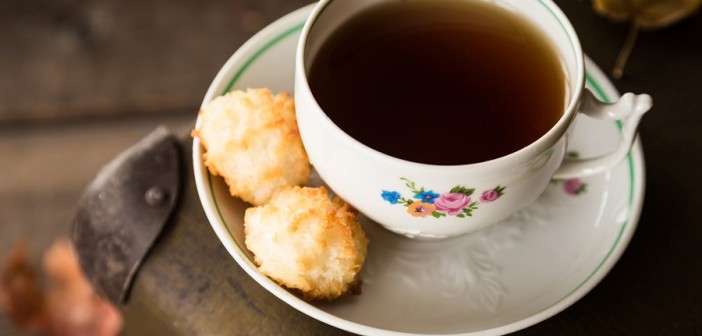Finding the right wine to go with a dish is a challenge even the greatest hosts fret about, but few home cooks ever worry about how other beverages might impact the taste of their food. However, everything you place on your table has the capacity to drastically alter how you and your guests perceive your meal.
Tea seems to be an innocuous drink whose mild flavor pairs well with anything — but tea connoisseurs know the truth. Due to the limitless varieties of tea as well as the variability of individual brews, any cuppa could have profound ramifications on the enjoyment of a dish. If you are a tea lover, you deserve to experience the full flavors of your food and your beverage by learning how to pair tea and cuisine.
pairs well with anything — but tea connoisseurs know the truth. Due to the limitless varieties of tea as well as the variability of individual brews, any cuppa could have profound ramifications on the enjoyment of a dish. If you are a tea lover, you deserve to experience the full flavors of your food and your beverage by learning how to pair tea and cuisine.
1. Practice Proper Brewing Technique
Many Americans believe that all it takes to make tea is hot water and some leaves, but actually, a perfect cup takes practice and precision. In order to give each cup of tea a congruent flavor, you must adhere to the science of brewing as laid out by generations of tea lovers before you. The procedure is as follows:
- Gather your ingredients and tools. Your kettle must be clean, your water must be fresh and cold, and you should have access to at least one heaping teaspoon of tea and one cup of water per person.
- Watch the pot. You must be nearby to remove the kettle from the heat precisely six seconds after it has reached boiling. Any longer, and you will over-boil the water and ruin the tea.
- Steep and stop. Your teabag or loose-leaf should remain in the hot water for exactly three minutes. When the timer rings, you must remove the bag or diffuser, or your tea will become bitter.
- Mix with care. Unless you are drinking tea for tea’s sake, you should avoid diluting the flavor with sugar, lemon, or any other mix-in. With pure, full-strength tea, you will more fully appreciate your pairings with food.
2. Get to Know the Nuances of Tea Taste
As with wine, beer, and other subtle beverages, tasting is a delicate art. Beginners must work to develop a honed palate for the myriad layers of flavor in tea. To start, here are some basic flavor profiles for familiar types of tea:
- White tea. Notoriously subtle and soft, white tea’s flavor is easily masked by any food stronger than mild. Plain vegetable salads without dressing, unseasoned rice, and biscuits are best.
- Black tea. Black tea’s robust taste and distinct tannins are strong enough to compete with the most flavorful foods, like well-seasoned dishes of meat and vegetables. Some fruity Indian varieties are perfect for sweet desserts, while smoky Chinese types are delicious with blackened meats.
- Green tea. Boasting three flavor profiles, vegetal, smoky, and fruity, green tea can accompany a number of foods. Japanese vegetal teas are best with seafood, Chinese smoky teas pair with bland meats like chicken, and Indian sweet teas are excellent with grains and fruit.
This guide may help you initially, but understanding the taste profiles for yourself will sharpen your pairing capability even more. After you can identify these common varieties of tea, you might want to expand into more exotic selections of tea, tisanes, and infusions, like chaga, guayusa, or Labrador.
3. Experiment With Appropriate Cuisine
After you feel comfortable with your command of tea’s flavors, you can begin tailoring your meals to your desired beverage — or vice versa. An easy way to begin pairing is to research the origin of your tea and select dishes common to that region’s cuisine.
For example, if you wish to incorporate a dark oolong tea into your meal, you might uncover that this particularly complex variety hails from the Wuji Mountains in China. Thus, you might plan for a handful of strongly flavorful Chinese dishes using duck or
smoked fish to accompany your drink.
Properly pairing your tea with a bevy of delicious dishes will not only enhance the flavors of both food and drink, but it will bring you satisfaction and confidence in your tasting ability. Undoubtedly, your days will soon be filled with tasting and testing for your next great tea pairing.




